As the dawn approaches, it brings with itself a multitude of opportunities to transform our mornings into healthy and revitalizing culinary choices. It’s time to bid goodbye to the mundane breakfast options and set our eyes on the scrumptious yet nutritionally enriching breakfast pick– steel-cut oats.
So, let us commence a nutritionally nourishing voyage that expands the ocean of information regarding the chewy and nutty consistency of this delicious morning zest meal.
Today we don’t only talk about food; this article is a celebration of taste, nutrition, and joy of starting your day with a blend of health and flavor – it’s a nutritional ode to steel-cut oats!
Oats:
Before going towards steel-cut oats, a type of oats, let’s first discuss what oats are.
Scientifically known as Avena Sativa, oats are a cereal grain from the Poaceae grass family. They are edible seeds of the oat grass and are known for their numerous health benefits. They are a rich source of soluble and insoluble fiber, B complex vitamins, phosphorus, magnesium, zinc, and more.
The abundant nutrients in oats make them crucial in preventing chronic diseases such as cardiovascular diseases, diabetes, cancer, obesity, and digestive diseases.

What are steel-cut oats?
A healthy and nutritious breakfast often demands a bowl of freshly made warm steel-cut oats!
Also called Irish oats, pinhead oats, or coarse oats; steel-cut oats are prepared by slicing toasted whole husked oat kernels into two to three pinhead-size pieces with steel knives or blades. They have a coarse and chewy texture and nutty flavor. Steel-cut oats are less processed than other oat types, so they require more water or milk and take more time to cook.

Nutrient composition:
1 cup of cooked steel-cut oatmeal provides 166 calories and 28 grams of carbohydrates. They are a rich source of soluble dietary fiber named beta-glucan and incorporate 4 grams in a cup. According to the Food and Drug Administration, consuming 3g of beta-glucan per day has countless health benefits for the body.
In addition, steel-cut oats are low in total fats providing 3.6 grams, and are a good source of protein (5.9 g). Among micronutrients, they provide a rich supply of sodium, potassium, and iron.
| Nutrients | Amount |
|---|---|
| Calories | 166 |
| Total carbohydrates | 28 g |
| Dietary fiber | 4 g |
| Sugars | 0.6 g |
| Total fats | 3.6 g |
| Trans fats | 0 g |
| Polyunsaturated fats | 1.3 g |
| Monounsaturated fats | 1 g |
| Protein | 5.9 g |
| Sodium | 9.4 mg |
| Potassium | 163.8 mg |
| Iron | 4.25 mg |
Role in human nutrition:
Steel-cut oats provide a myriad of advantages to the human body, ranging from lowering body weight to prevention of chronic diseases. They are discussed below:
Weight management:
According to WHO, obesity is one of the health risk factors with a mortality rate of above 2.8 million affecting developed and underdeveloped countries equally. Obesity doubles the risk of other chronic diseases including CVD, diabetes, and cancers etc.
Whole grains have been extensively studied for their beneficial effects on weight loss, mainly due to the presence of dietary fibers (1). Numerous studies have demonstrated that high consumption of dietary fibers from oats is inversely proportional to BMI. One study worked on the effect of oats on healthy people and concluded that oats reduce body weight, BMI, body fat, and waist-to-hip ratio (2).
Similarly, another study investigated the effect of oats on body weight in type 2 diabetic patients and found that consuming oats reduces weight along with diabetes markers (3).
The mighty dietary fiber we are currently discussing, with the mighty health benefits, is none other than ‘beta-glucan’. It is a soluble fiber chiefly present in barley and oats and became the talk of the town in 1998 when the Food and Drug Administration allowed the food labels to mention if a product contains soluble fiber from oats.
Diabetes prevention and control:
Want to keep your blood sugar in control? A bowl of steel-cut oats every day at breakfast is not a bad idea!
Adding fiber to your everyday diet helps keep blood sugar in control and prevent insulin resistance. Beta-glucan; the champion nutrient in oats, is here to save the day again!
A meta-analysis of randomized controlled trials suggested that consuming oats beta-glucan reduces fasting blood glucose levels but doesn’t affect HBA1c and 2h-PG (diabetes markers)(4).
Another meta-analysis found a positive association of oats beta-glucan with fasting blood glucose levels and 2h-PG, while the results for HBA1C were non-significant. Further studies are needed to investigate the effect of steel-cut oats on several diabetes biomarkers (5).
With these studies, we can conclude that chewy and nutty steel-cut oats are a good option to add to our everyday diet for a healthy and disease-free life.
Heart health:
Are you still not satisfied with the amount of benefits steel-cut oats have to offer?
Well, let’s go back to where it all started, Cholesterol; oats were the first whole grain to be recognized to lower cholesterol levels in the blood. The first study that revealed the beneficial effects of oats on cholesterol happened back in 1963 (6) and the reduction is attributed to the presence of beta-glucan in oats.
A meta-analysis of randomized controlled trials identified that oats reduce LDL, Apoliprotein B (carrier of lipids) and improve HDL cholesterol (7).
In addition, oats also reduce high blood pressure in hypertensive patients, a risk factor for stroke and coronary heart disease. A study on hypertensive rats for 15 weeks showed cardio-protective properties by reducing both systolic and diastolic blood pressure (8).
Suitable for celiac disease:
Celiac disease is an autoimmune condition characterized by disturbances in the digestive tract, especially the small intestine, upon gluten consumption. Gluten is a protein found in wheat, barley, rye, and other grains.
The consumption of oats for celiac disease is controversial due to the scarcity of long-term studies. So a long-term study carried out in 2017 where 869 celiac-diagnosed patients on a gluten-free diet for 10 years were interviewed and analyzed for symptoms. About 82% of the patients regularly consumed oats. This long-term study concluded that oats are safe to include in a gluten-free diet and may improve the quality of life (9).
Increase antioxidant activity:
Another health benefit of steel-cut oats is their antioxidant activity. Phytochemicals found in oats such as tocols, flavonoids, phytic acid, and phenolic acids, act as antioxidants and protect the body from the pathogenesis of many chronic diseases.
Furthermore, a group of unique antioxidants present primarily in oats ‘avenanthramides (AVs)’ have 10-30 times higher antioxidant properties than other antioxidants. AVs also inhibit the cell overgrowth in smooth muscle cells (10).
Good for skin:
Aiming for healthy and smooth skin? Topical treatment of oats is an excellent remedy.
In addition to its benefits in human physiological function, oats offer several advantages for the skin as well. Colloidal oatmeal treatment for skin conditions has a long history dating back to the Roman times. They can be used for a variety of skin ailments such as rashes, burns, itches, eczema, and atopic dermatitis. A study where females with itch and dry skin were treated with colloidal oatmeal skin lotion showed improvement in dryness, roughness itchiness of the skin.
Some studies also suggest that tropical oats improve the symptoms of chicken pox, poison ivy, and other rashes (12).
Helps prevent allergies in babies:
Introducing steel-cut oats early in your child’s diet may prevent him from developing certain allergies.
A study on children revealed that including oats in your children’s diet may help prevent the development of asthma (13). Another study produced similar results where the introduction of oats in a child’s diet early on may decrease the risk of asthma, atopic sensitization, and allergic rhinitis (14).
Side effects of steel-cut oats:
Experiencing any side effects from steel-cut oats is rare; however, it may contribute to indigestion and gas in some people due to their high carbohydrate and fiber content. One tip to reduce indigestion is to start with a low dose and build it slowly.
How to add them to your diet:
Steel-cut oats can make themselves a place in our breakfast in several ways. Some of the delicious and easy ways to incorporate them into our diet are:
- Cook the oats in water or milk of your choice for 15-30 minutes, and top with your favorite nuts and fruits, peanut butter, and chia seeds, and enjoy a warm and hearty bowl of breakfast on a chilly morning.
- You can substitute the breadcrumbs in the food of your choice with steel-cut oats.
- Steel-cut oats can be blended with the fruits of your choice for a glass of nutritious and healthy smoothie.
- They can also be used in baked oatmeal or overnight oats
- Steel-cut oats can serve as a base for a risotto-style dish.
- Toss your oats in yogurt and top with some granola for a delicious midnight snack.
Did you know you can make waffles or pancakes from your oats? Add steel-cut oats to your pancake or waffle batter, and enjoy a healthy and delicious breakfast.
Ultimately, the bowl of steel-cut oats is not just another breakfast option; it’s a dedication to a healthy and nutritious lifestyle. Remember its endless benefits as you savor each spoon of this warm and hearty cereal and take it all in. From its fiber-rich role in human nutrition to its benefits as a topical ointment, these tiny, course pellets do it all. In parting, I intend to mention to cherish the taste, texture, and nutrition of this hearty beige bowl of nutritional symphony!
Reference:
- https://doi.org/10.4239/wjd.v11.i2.26
- https://doi.org/10.1007/s11130-013-0336-2
- https://doi.org/10.3390/nu8090549
- https://doi.org/10.1136/bmjdrc-2022-002784
- https://doi.org/10.1093/cdn/nzab041_004
- https://doi.org/10.1016/s0140-6736(63)90210-1
- https://doi.org/10.1017/S000711451600341X
- https://doi.org/10.1111/jfbc.13402
- https://doi.org/10.3390/nu9060611
- http://dx.doi.org/10.1016/j.foodchem.2017.06.104
- J Drugs Dermatol, 14(1), 43-48.
- https://doi.org/10.1002/9781118354100.ch15
- https://doi.org/10.1017/S0007114509991541
- https://doi.org/10.1016/j.jaci.2012.10.028


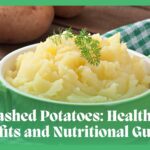

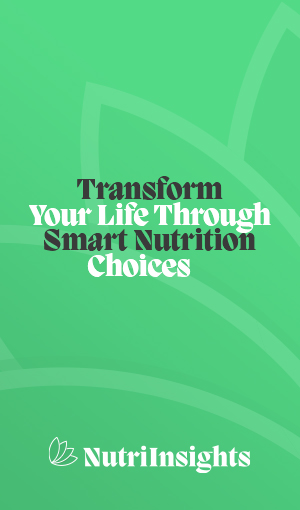
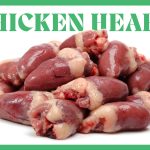
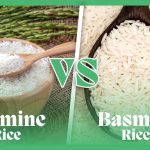
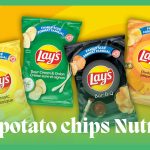
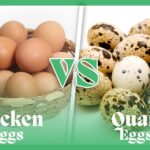
Brilliant work on this article! You’ve covered the topic comprehensively and yet made it extremely relatable.